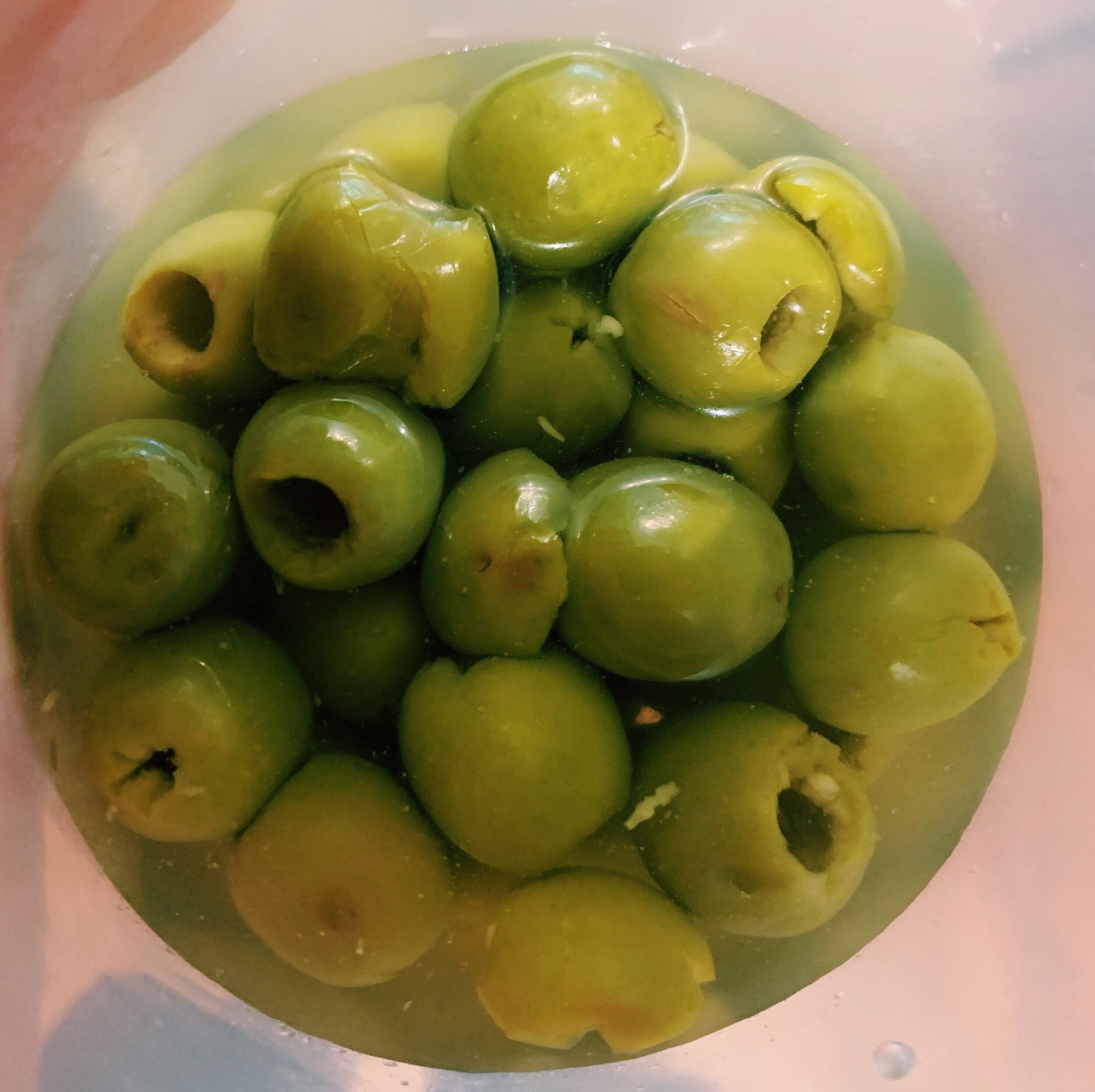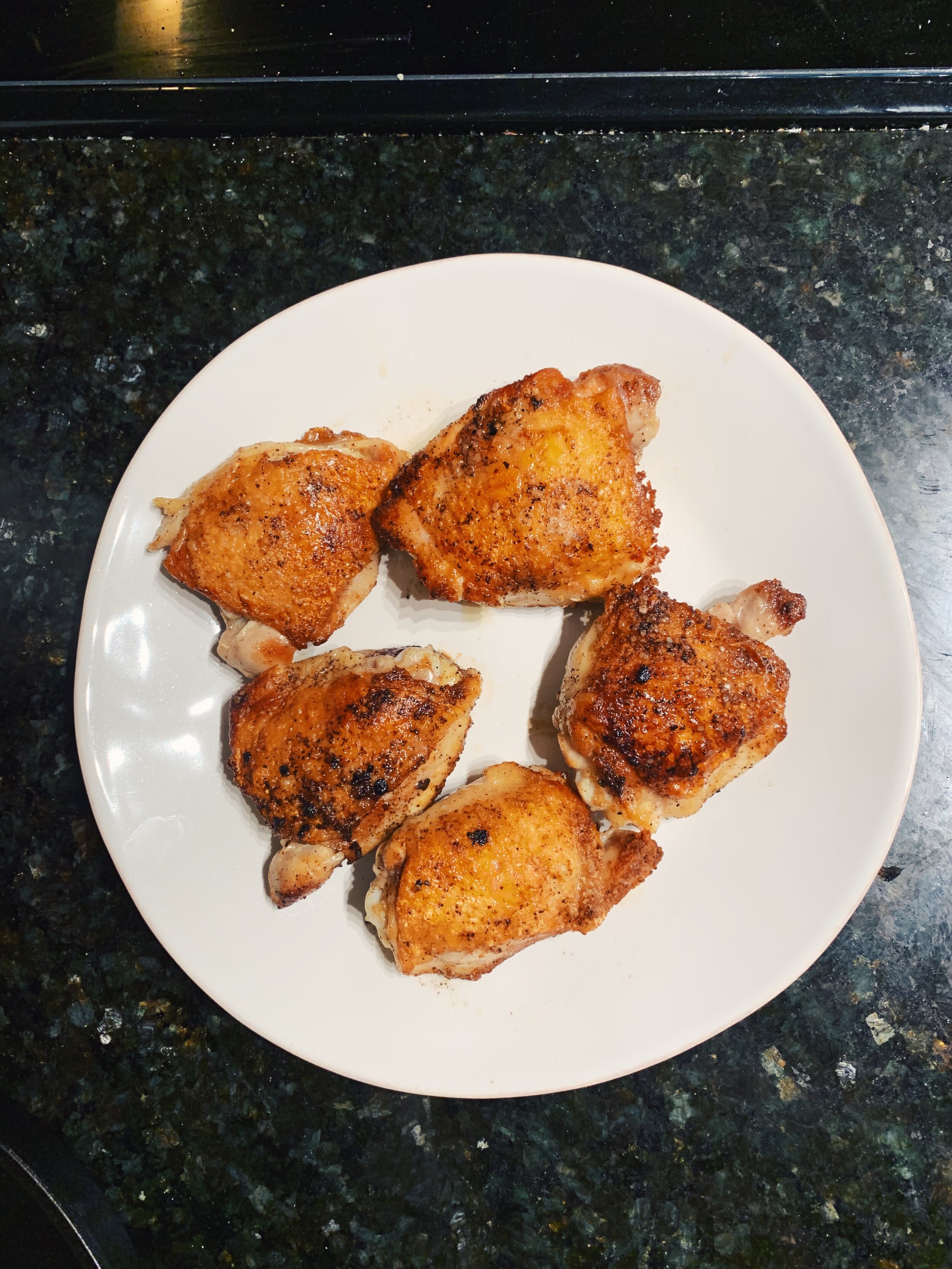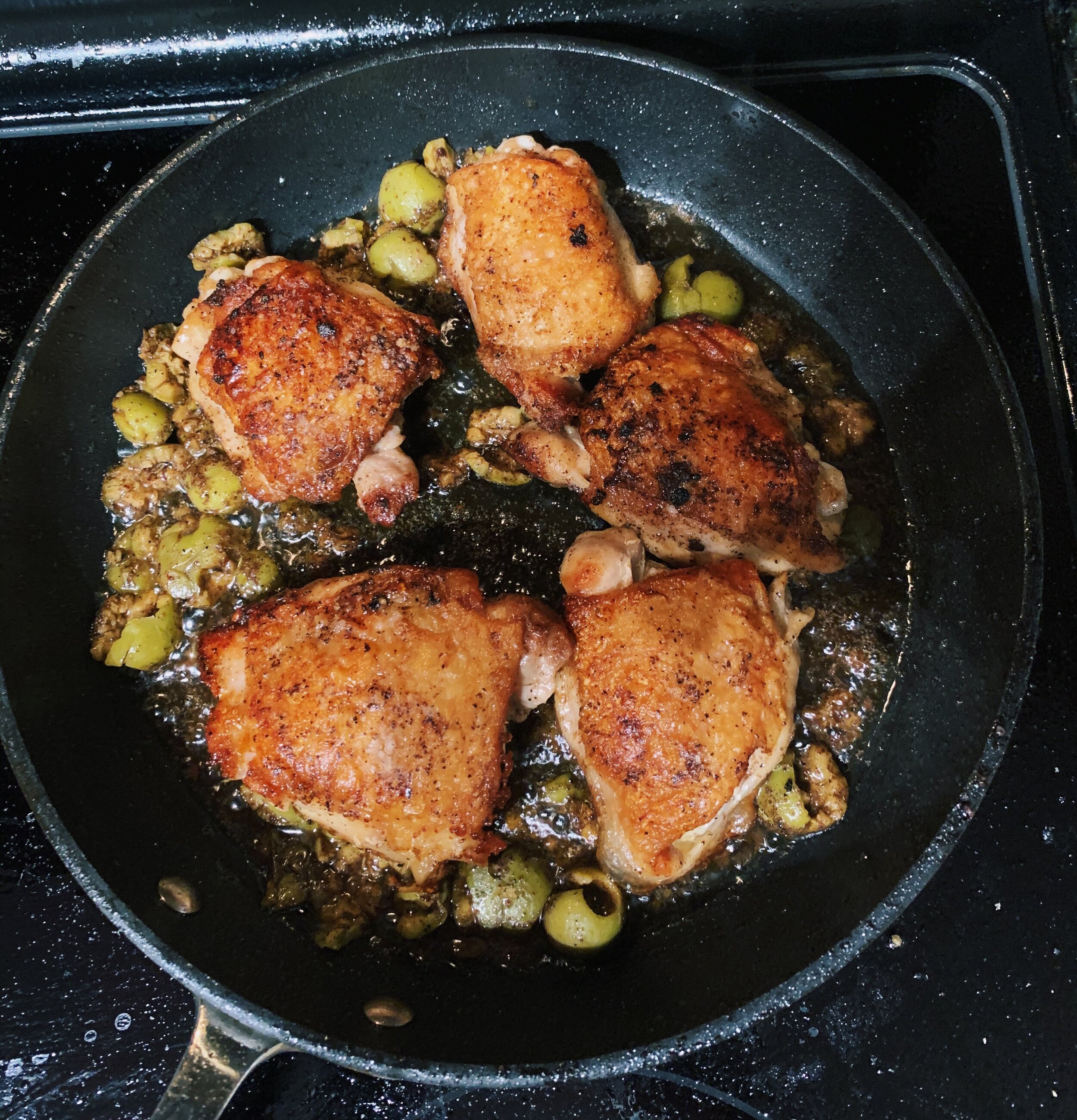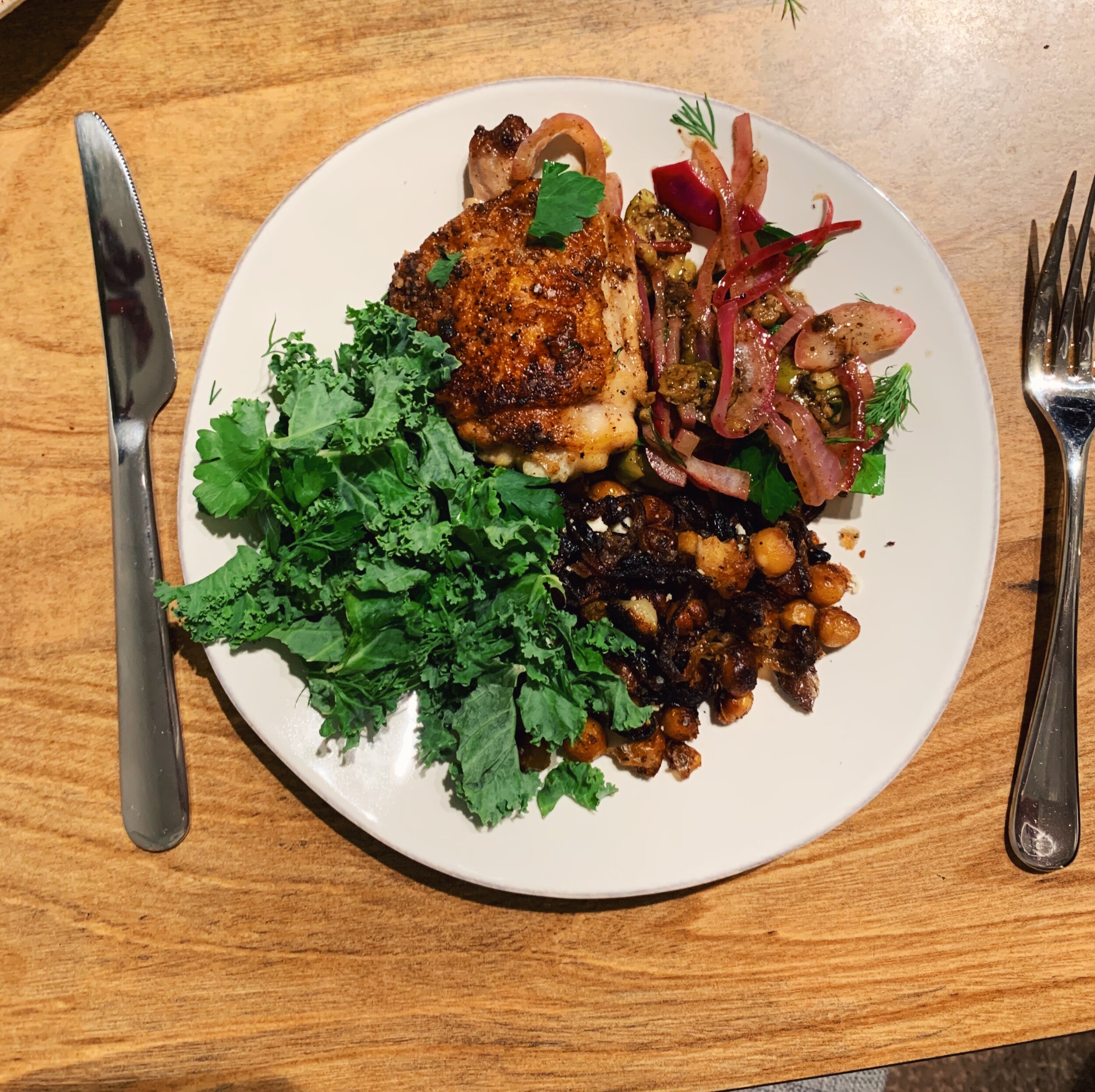I bet my mother-in-law, Michelle, is on the edge of her seat, waiting to hear what I thought of this dish. Michelle is an avid olive lover. On multiple afternoons, I’ve witnessed her spontaneously glance at the oven clock and, regardless of the actual time, announce to the room that it was “Olive Hour” before marching to the refrigerator to collect her jars of olives for a snack. She can consume a whole bowl of olives and not bat an eye. She always has multiple olive varieties on hand, stored in large glass jars in her fridge. I actually accompanied her on a trip to IKEA to buy these large jars for storing her olives (& her pickles, because priorities). Her love of olives is exceeded only by her love of really good pasta and her family, whom she loves really well, I might add.
For all of her enthusiasm, Michelle has been disheartened by my inability to enjoy an olive. My distaste for olives confuses me. I love salty, briney food like pickles, mustard, and sauerkraut. What is it about an olive that makes me instinctually scrunch up my face when I bite into it? I know that no one in my nuclear family likes olives. Is it a genetic predisposition?
When I learned that Alison is on par with Michelle’s olive love, I dreaded the implications. But like so many other times that I’ve already had to face my skepticism in these past months, I knew I couldn’t cater to my olive aversion forever. So I chose to start with the recipe on the cover of Alison’s book, Dining In.
A brief note about my first olive-buying experience. I just couldn’t wrap my mind around buying a room-temperature jar of olives. The way the little round guys sit in that still liquid makes me think of a biology class experiment that is never meant to be eaten. Jordan once took a completely candid picture of me while we were in Costa Rica, and the expression on my face in this picture probably mirrors what my face looks like when I see jars of olives at the grocery store. To avoid this reaction, I went to the olive bar at Whole Foods. Somehow that was a slightly more pleasant experience.
The first step of this recipe is thinly slicing half a red onion and marinating the slices in lime juice, salt and pepper. Doing this step first allows time for the onions to soften in the acid and pickle ever so slightly.
Onions aside, the bone-in, skin-on chicken thighs get a good coating of salt and pepper before cooking in a skillet, skin-side down. It takes about 15 minutes or so on high heat to get the meat cooked though and the skin a golden, crispy brown. (Allow me a moment to say that it’s a time like this when owning a digital meat thermometer is so crucial. All I had to do was stick the tip of the thermometer into the thickest part of each thigh to know if it was cooked through to a safe temperature (165 for chicken). No need to slice the thigh open to look at signs of rawness, thus ruining the skin and mangling the meat in the process. My meat thermometer has made cooking chicken less stressful, and it was only $18!) Thanks for indulging my digression. Now back to regularly scheduled programming.
Once the chicken is ready to go, it’s removed from the skillet, which by now is super hot. Throw in the crushed Castelvetrano olives, ground sumac, and a half cup of water, and allow it all to heat up. Then place the chicken back in the skillet, skin-side up to keep it crispy, and allow the water to reduce. This helps infuse the chicken with more flavor and, I imagine, reduce some of the olives’ bitterness. At the very end, the lime-y onions, which by now are much softer, are added to the skillet to barely warm through. Just until the red skin has turned a bright fuschia, about 2 minutes.
Now for the moment of truth. Just before plating the chicken, I reached into the pan and picked out an olive bit. Without much thought, I popped it into my mouth. And it was really… good. Really good. “Jordan!” I yelled. He turned around from his work desk. “I just tasted an olive and liked it!”
Two theories about why I liked these olives: 1. The olives lost some of their funk and bitterness from being heated through. 2. Castelvetrano olives are supposedly very mild. That’s all I got. I’m open to any other ideas.
Jordan loved this meal, and proclaimed for the fourth time that THIS was the best chicken recipe from Alison Roman. Really, he’s said this about four different recipes. I honestly loved it, too. So I will be making this one again.
37 recipes cooked, 188 to go.
served with Alison’s Frizzled Chickpeas and an herby kale salad

















